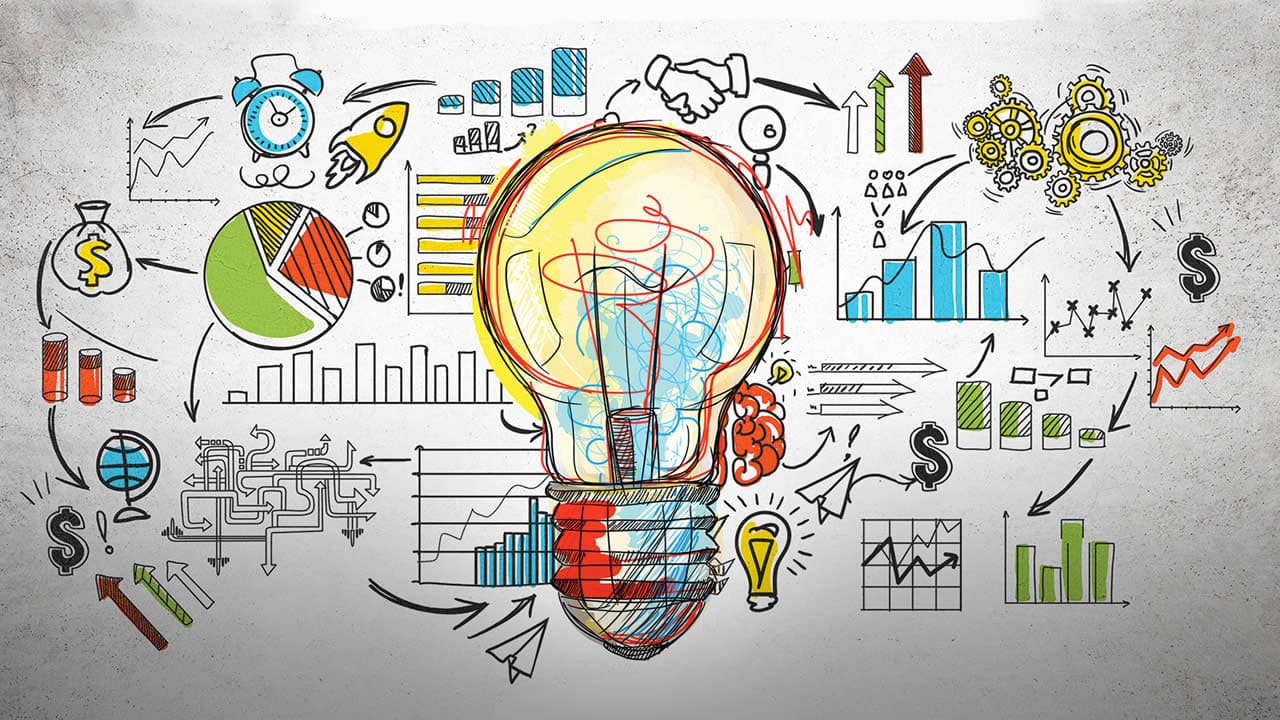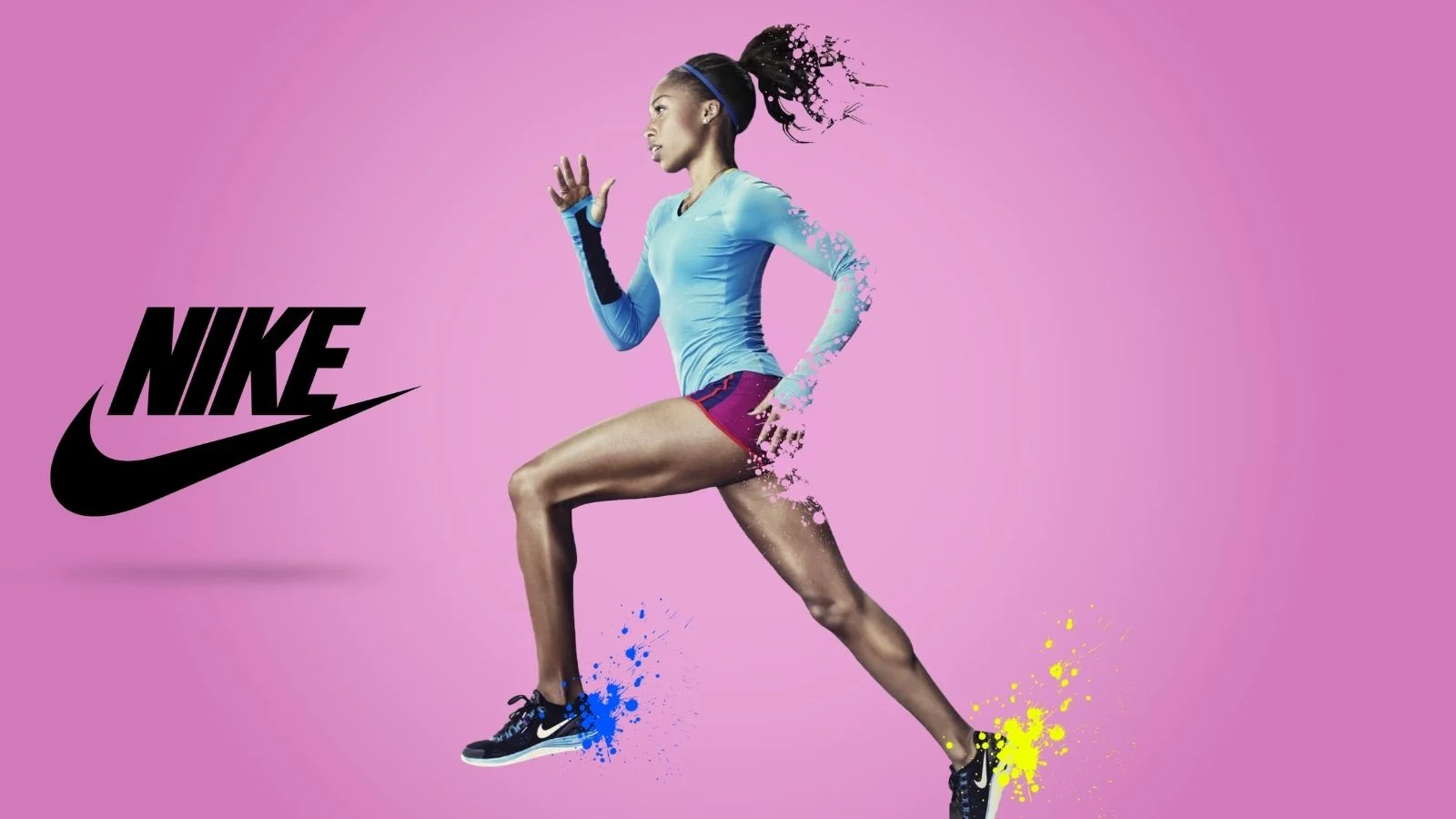
Table of Contents
Design- is not merely decoration; it is strategy made visible. Across industries, the most groundbreaking companies have proven that creativity, when anchored in user-centric thinking and cultural insight, yields exponential returns. These are not accidents—they are stories of bold visionaries who rejected the ordinary and embraced risk. This compilation celebrates design as the unsung hero of business transformation, revealing how compelling visuals, intuitive interfaces, and narrative-driven branding can change the world. From tech titans to heritage icons, each example proves one powerful point: creativity isn’t a luxury—it’s a lever for success.
1. Airbnb: Reinventing the Concept of Home

A Disruptive Blueprint in Human-Centered Design
Airbnb didn’t merely enter the hospitality sector—it rewrote its architecture. What began as a modest solution for two roommates renting out air mattresses evolved into a global phenomenon that recalibrated how society defines “home.” Through a potent mix of design thinking, emotional resonance, and platform innovation, Airbnb emerged as a paragon of digital hospitality. Its secret? Crafting spaces that feel personal, curated, and anchored in cultural authenticity.
The platform’s design ethos is built on empathy. From the moment users land on the homepage, they’re immersed in a visual narrative of belonging. Whitespace isn’t just aesthetic—it’s strategic, creating a calm, welcoming atmosphere that counterbalances the noise of decision-making. Carefully selected images evoke warmth and trust, while micro-interactions provide a seamless user journey. Every icon, transition, and layout choice contributes to the narrative: You’re not just booking a stay; you’re connecting with a story.
The 2014 rebranding was a pivotal design success story that proved creativity wins. The introduction of the Bélo symbol—a visual amalgam of a heart, a location pin, and the letter “A”—wasn’t just branding; it was a manifesto. It redefined identity in the sharing economy, articulating a global promise of belonging without borders. Airbnb’s willingness to challenge visual norms demonstrated how bold creativity can yield deeper emotional investment and brand loyalty.
Functionality and form coalesce within Airbnb’s mobile and desktop experiences. Filtering stays by amenities, location, or even the aesthetic of the space (e.g., “design-led homes” or “off-the-grid retreats”) feels intuitive and elevated. The design infrastructure anticipates needs without overt suggestion. Trust, a fragile currency in peer-to-peer models, is fortified through thoughtful reviews, profile verification visuals, and consistent design patterns that communicate safety.
Airbnb also excels at creating environments that invite user-generated content into the design ecosystem. Listings are alive with personality—not because of templated inputs, but because hosts are empowered to share their narratives, their space’s charm, and their local expertise. These micro-stories enhance the platform’s rich, communal texture.
The broader impact of Airbnb’s design innovation echoes across industries. It has compelled hotels to rethink personalization, encouraged the proliferation of experience-first interfaces, and set a gold standard in participatory design. The company’s creative audacity transformed real estate into a shared canvas and turned the idea of “home” into something fluid, imaginative, and deeply human.
“1. Airbnb: Reinventing the Concept of Home” exemplifies what happens when design transcends the screen and becomes a lived philosophy. Not merely utilitarian, Airbnb’s interface is an invitation—to explore, to belong, to experience the extraordinary within the ordinary. In a world teeming with impersonal transactions, Airbnb made connection its design cornerstone. And the result? A movement that proves the most powerful innovations often begin not with technology, but with empathy.
2. Apple: The Symphony of Simplicity

Design as a Silent Maestro
“2. Apple: The Symphony of Simplicity” is more than a headline—it’s a philosophy rendered in aluminum, glass, and pixels. Apple’s ascent to iconic status is rooted not just in technological prowess, but in its unwavering devotion to minimalist design. In an age where clutter is commonplace, Apple dares to whisper when others shout.
Every Apple product is a concerto of clarity. From the original iPod’s click wheel to the edge-to-edge elegance of the iPhone, the brand orchestrates user experiences with precision, restraint, and emotional resonance. This is not design for spectacle; it is design for harmony. Each interface breathes with intentionality. Each transition feels choreographed. Simplicity becomes a form of luxury.
At the heart of Apple’s design revolution is the legacy of Jony Ive, whose reverence for Bauhaus principles and Zen-like purity helped sculpt an aesthetic that transcends time. Under his vision, design became invisible—an enabler rather than a distraction. Whether unlocking a phone or sketching on an iPad, the user is the center of a silent performance. Tools dissolve. Experience remains.
Apple’s physical products are paragons of industrial elegance. The unibody MacBook, the geometric precision of AirPods, and the seamless fusion of materials exemplify tactile seduction. There is no surplus. There are no flourishes. Just perfect ratios and intentional voids. Even the packaging—meticulously engineered with as much care as the device itself—signals that design begins before the product is even touched.
Digital design within Apple’s ecosystem mirrors its physical counterparts. iOS, macOS, and watchOS are exercises in clarity, hierarchy, and flow. Typography, spacing, and gestures work in concert to guide users effortlessly. Visual metaphors, once prominent, have given way to flat design that feels more breathable, yet deeply intuitive. With every update, complexity is distilled—not diluted.
The branding, too, is design-led. The bitten apple logo, the stark white backdrops, the sans-serif elegance of product pages—they all compose a visual language that speaks of aspiration without excess. In every keynote, in every advert, there is a pause, a focus, a rhythm that mirrors the product itself. Apple doesn’t sell features; it sells philosophies—through design.
This symphony of simplicity has not only elevated Apple, but redefined design standards across sectors. Tech giants emulate its aesthetics. Automakers mimic its dashboards. Even healthcare apps aspire to Apple’s smooth choreography. Its influence is tectonic.
“2. Apple: The Symphony of Simplicity” reveals that the most complex problems are often best solved with elegant restraint. Design, in Apple’s hands, is not ornamental. It’s elemental. It’s the silent maestro conducting emotion, intuition, and functionality into a seamless harmony. And in that harmony, Apple proves that simplicity isn’t a lack of ambition—it’s the highest form of it.
3. Nike: Empowering Movement Through Design

Kinetics as a Creative Language
“3. Nike: Empowering Movement Through Design” is more than a mantra—it’s a masterstroke of visual storytelling and performance-centric innovation. At its core, Nike’s design philosophy radiates energy, rebellion, and resilience. The brand doesn’t just outfit athletes; it architects emotional velocity. Each product is an anthem of motion, each campaign a visual sprint toward empowerment.
Nike’s iconic Swoosh, a symbol of speed and triumph, is emblematic of its design ethos. It’s minimal yet loaded with kinetic tension. This singular curve has become synonymous with ambition, agility, and forward momentum. Every sneaker silhouette, every performance gear stitch, every fabric contour is conceived with a singular mission—to liberate the human form in motion.
The Flyknit series exemplifies this convergence of sustainability, innovation, and design elegance. Lightweight, form-fitting, and environmentally responsive, these shoes redefine the relationship between body and material. They’re not just worn; they’re experienced. Each pair wraps the foot like a second skin, designed not for ornamentation but for transcendence. Nike’s commitment to motion isn’t symbolic—it’s scientific.
Beyond product aesthetics, Nike’s digital platforms reflect a seamless union of utility and emotion. The Nike Run Club and Training Club apps don’t merely track progress—they cultivate ritual. Through intuitive interfaces, motivational prompts, and immersive sound design, they transform workouts into personal odysseys. Here, user experience design is not a feature; it’s a performance enhancer.
Nike’s visual campaigns are visceral symphonies. With high-contrast photography, defiant typography, and evocative cinematography, they celebrate the raw, unscripted moments of sport. Campaigns like “Dream Crazy” and “You Can’t Stop Us” merge activism with athleticism, presenting design as a force for social movement. Typography stretches like sinew. Colors pulse like heartbeats. The visuals don’t follow trends—they set tempos.
Retail design, too, plays a critical role in reinforcing Nike’s movement-driven ideology. Flagship stores are immersive arenas—dynamic spaces where products are contextualized through spatial choreography. Interactive installations, motion-triggered visuals, and kinetic architecture converge to make each visit a multisensory expedition. These environments are not stores; they are sanctuaries of motion.
Even the packaging—bold, eco-conscious, and ergonomically refined—tells a story of purposeful design. There is intentionality in every layer, each fold engineered to reflect Nike’s sustainable ambitions without compromising aesthetic allure.
“3. Nike: Empowering Movement Through Design” underscores how design can serve as both medium and message. It’s not merely about visual beauty or product efficiency—it’s about igniting momentum, both physically and culturally. Through the interplay of form, function, and fierce storytelling, Nike has built a brand where creativity is velocity, and every design choice is a declaration of defiance against inertia.
In the end, Nike doesn’t just craft gear—it crafts motion. And in that perpetual movement lies its design genius.
4. Tesla: Futurism Meets Function
Driving Tomorrow, Today
“4. Tesla: Futurism Meets Function” encapsulates a revolutionary design philosophy—one that blurs the boundary between high-concept science fiction and real-world utility. Tesla isn’t merely a car company. It’s an architectural force of disruption, engineering not just transportation but transformation. Every model is a manifesto. Every innovation, a paradigm shift.
At the heart of Tesla’s ethos is an uncompromising vision: to reimagine mobility in an electrified future. The vehicles are not adorned with excessive ornamentation or nostalgic flourishes. Instead, they express a streamlined minimalism that is brutally modern. Smooth surfaces. Aerodynamic silhouettes. Commanding yet composed profiles. Tesla’s design language whispers futurism, not in loud declarations, but in purposeful restraint.
Inside, the cabin redefines spatial intelligence. Traditional dashboards and tactile dials are replaced with digital elegance. The centerpiece—a capacitive touchscreen—serves as both command center and control panel. Here, analog clutter gives way to intuitive fluidity. The interface is sculpted for clarity, responsiveness, and adaptability, updated remotely like a living organism. It learns. It evolves. It gets better over time.
Tesla’s aesthetic purity doesn’t sacrifice functionality. Autopilot and Full Self-Driving modes aren’t science fiction tropes—they’re operational game-changers. Embedded with a neural net and powered by a suite of sensors and real-time data, the vehicle becomes a co-pilot. Every decision made in milliseconds. Every maneuver calibrated with near-clinical precision. This is not just a car; it’s a machine of sentient motion.
The exteriors are equally intelligent. Door handles that vanish into body panels. Glass roofs that stretch like the horizon. Drag coefficients optimized by computational fluid dynamics. Beauty here is born from utility. The Cybertruck, for instance, is a brutalist sculpture forged in cold-rolled steel. Polarizing in form, yet pioneering in function. It challenges aesthetic norms while embodying extreme durability.
Tesla’s charging ecosystem completes the loop of futuristic convenience. Supercharger networks are positioned like neural nodes across continents—redefining range anxiety as a relic of the past. Infrastructural design, once invisible, becomes part of the brand’s immersive identity.
Even Tesla’s energy products—Powerwall, Solar Roof—mirror the brand’s vision of seamless integration between design and sustainability. They don’t announce themselves. They blend in. Yet beneath the quiet surface lies monumental innovation, shifting the power dynamics of modern living.
Beyond automotive, Tesla exists as a cultural accelerant. It fuses Silicon Valley ingenuity with aerospace ambition. It reorients the public’s expectations—not just about what a car should be, but about what technology should feel like. Cold steel warmed by intelligent design. Artificial intelligence made human through interface.
“4. Tesla: Futurism Meets Function” is not just a phrase—it’s a blueprint for the future. Where aesthetic elegance meets mechanical brilliance. Where visionary ideals are grounded in tangible performance. Tesla doesn’t simply build electric vehicles; it architects the syntax of tomorrow’s mobility—elevating the drive, electrifying the experience, and reshaping the road ahead.
5. IKEA: Flat-Pack Ingenuity
IKEA’s design success story is rooted in democratization. With Scandinavian minimalism at its core, IKEA doesn’t just sell furniture—it delivers experiences in boxes. Every manual is a triumph of visual communication, eliminating the need for language entirely. Their showrooms are theatrical mazes of inspiration, cleverly encouraging impulse decisions through spatial storytelling. IKEA’s creativity lies in making design approachable, assembling dreams one Allen key at a time.
6. Coca-Cola: Branding Eternal Youth
Few brands evoke nostalgia and modernity simultaneously like Coca-Cola. Its design magic lies in evolution without erosion. The contour bottle, the Spencerian script, and the bold red hue are timeless identifiers. Yet, Coca-Cola continuously reinvents its packaging and campaigns to remain culturally resonant. From shareable cans with names to minimalist Christmas ads, their design pivots retain soul. It’s a masterclass in consistency balanced with freshness—where design fuels emotional resonance.
7. Google: Navigating the Visual Web
Google transformed the internet from chaos to clarity. Through relentless iteration and user testing, their design team has championed speed, accessibility, and modularity. Material Design unified disparate experiences across platforms, blending intuitive navigation with bold, layered visuals. Search results, Gmail, Docs—all exude a crispness that belies their complexity. Google’s creative triumph is its invisibility; the design fades so that function can flourish.
8. Spotify: Harmonizing UX and Emotion
Spotify mastered the visual rhythm of music streaming. Its interface pulses with dark modes, clean typography, and subtle animations that mirror the moods of its users. The data-driven design of personalized playlists like Discover Weekly adds a layer of intimacy to the experience. Campaigns like “Wrapped” translate statistics into storytelling, turning user habits into shareable moments. Spotify’s design brilliance is its blend of algorithmic precision and artistic expression.
9. LEGO: Systematic Creativity
LEGO isn’t just a toy; it’s a modular manifesto. The brand’s design success lies in its open-ended nature—endless recombination with a finite set of components. Their instruction booklets are paragons of instructional design, intuitive and language-free. Licensing collaborations (Star Wars, Harry Potter) have added narrative depth, while digital ventures like LEGO IDEAS invite users to co-create. The result? A brand that scales creativity across generations without losing coherence.
10. Dyson: Engineering Aesthetics
Dyson doesn’t just build appliances—they sculpt them. The design ethos is one of uncompromising innovation, from cyclone vacuum systems to bladeless fans and supersonic hair dryers. Each product is a mechanical symphony encased in sleek futurism. Transparent components reveal function, while the materials speak of industrial elegance. Dyson proves that utilitarianism can be beautiful when creativity is applied to both form and internal logic.
In each of these top 10 design success stories that prove creativity wins, a pattern emerges: the willingness to defy norms, elevate user experience, and turn imagination into impact. Whether it’s reimagining lodging, redefining mobility, or rekindling brand nostalgia, these entities underscore one immutable truth—design is not a department; it’s a mindset.